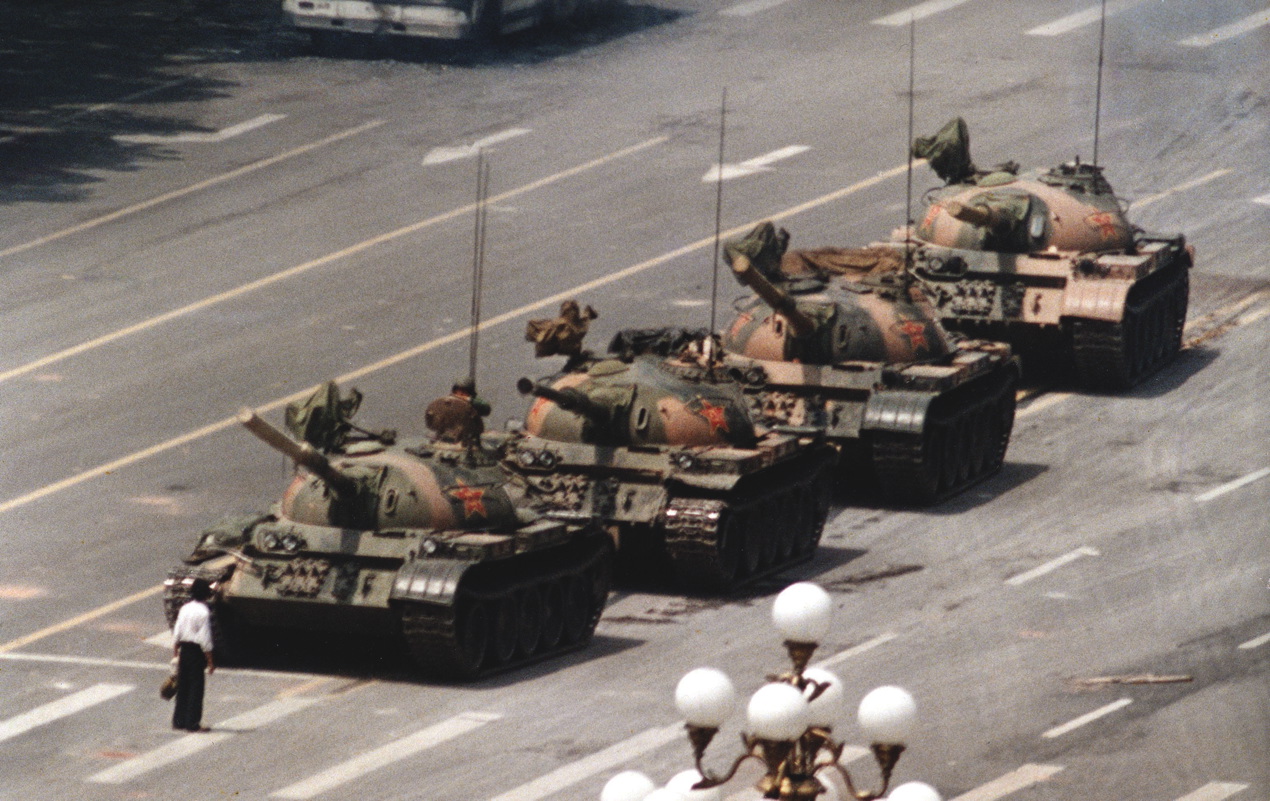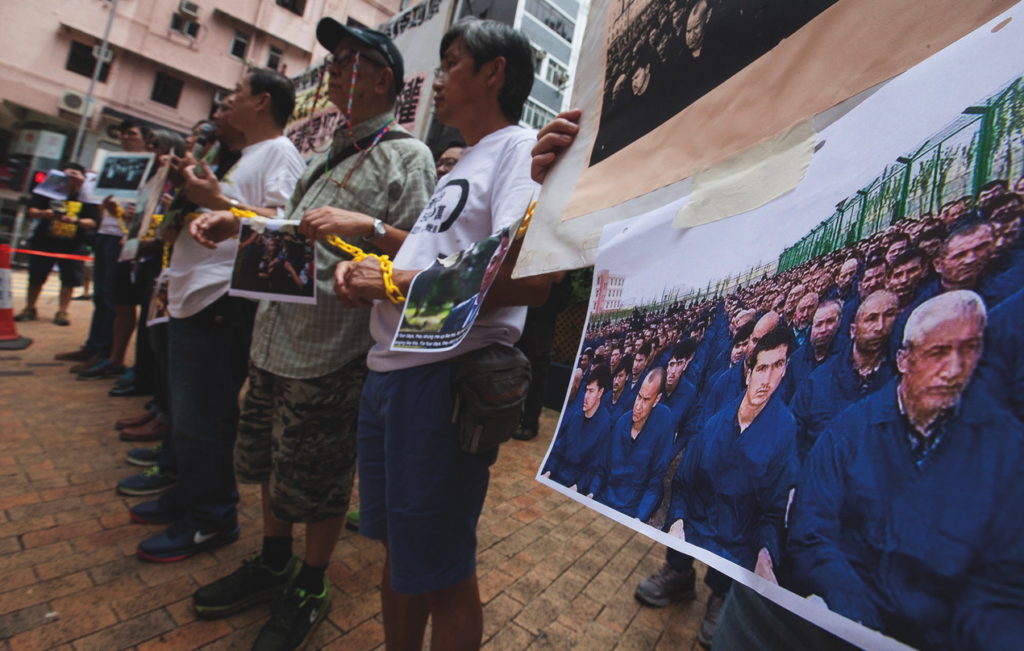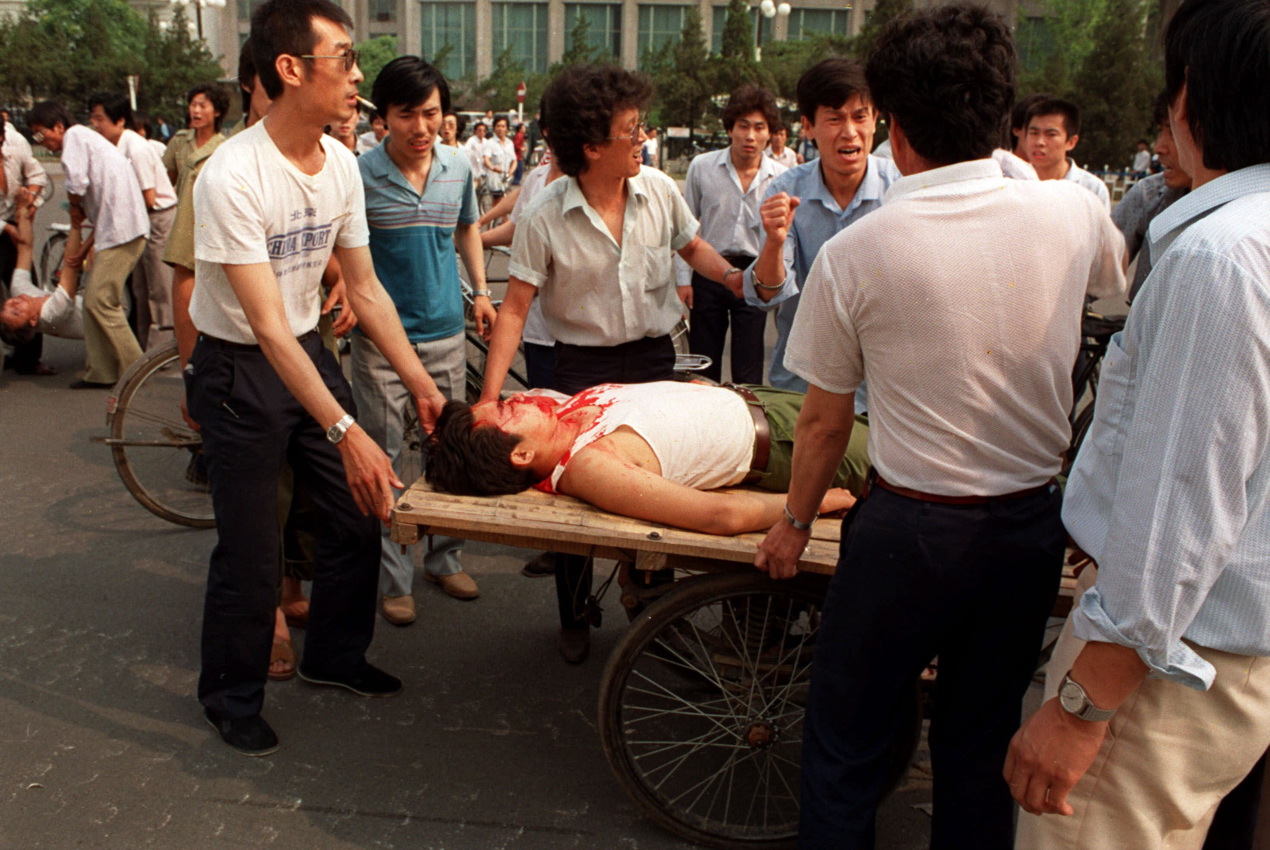Square root of protest
Thirty years ago today the Chinese government mercilessly crushed the Tiananmen Square protests in events that reverberated around the world. How have Chinese activists fared since?
It was the revolution that failed. Following the death of reformist former premier Hu Yaobang in April 1989, demonstrators took to the streets in cities across China demanding change – first in their hundreds, then in their thousands, then in their tens of thousands. The protests were led by students, but supported at all levels of society. Intellectuals wrote petitions. Train drivers allowed protesters to travel for free to Beijing. State propagandists condemned the demonstrators by day, then left work to join the protests. Doctors and nurses provided free medical care to growing numbers of hunger strikers.
Protesters had many grievances but many of them needed greater political liberty to be properly addressed and so were a direct threat to Communist Party rule, a fact that did not prevent thousands of Communist Party members from joining the protests.

The people of China were, in the words of Mao Zedong, “standing up”. And for a while it looked like they might succeed. Some senior leaders openly sympathised with the demonstrators and even hardliners were forced to meet them and hear their demands. Angry editorials in state-owned newspapers met with angry public responses. An attempt to declare martial law on 20 May was simply ignored. And although the protests were a nationwide social movement, its leadership was concentrated around Tiananmen Square in central Beijing and so it became known as the Tiananmen uprising. On 4 June the government finally sent in the army to crush the protests at their epicentre in Tiananmen Square. Estimates of those killed vary between 500 and 10,000.
Thirty years on, the Communist Party of China is firmly in charge, and discussion of the “Beijing Spring” absolutely forbidden
Thirty years on, the Communist Party of China is firmly in charge, and discussion of the “Beijing Spring” absolutely forbidden. Widely hailed as a reformer when he took office, current president Xi Jinping has indeed made many changes to the way China is run. He has brought Chinese society more firmly under the control of the party-state. He has brought the Chinese state more firmly under the control of the Communist Party. And he has brought the Communist Party more firmly under his own control.
China’s activist community has also been resilient over the past 30 years, regrouping after Tiananmen and experimenting with various ways to try to lever a bit more openness and justice into the system, if not change it altogether. But now it is really feeling the pressure, says Yaxue Cao, a veteran dissident and proprietor of the China Change website.
“These are very dark times for China’s activist community,” she tells Big Issue North. “There’s always been a methodical and systematic targeting of activists. But it’s intensified since 2013 and is still ongoing as China quietly detains very low-key labour NGO workers, human rights lawyers, dissidents and activists in general, including some who have just been released from prison.”
It’s a crackdown that expands way beyond people who offer a direct challenge to the state, she says.
“Over the past few years, Xi Jinping has been pursuing a ‘total security’ policy domestically: in the space of 18 months or so between 2014 and 2016 he passed major security laws; he set up the social credit system; he has put over one million Uyghurs in concentration camps; he has been attacking both official and unofficial churches; he is piloting a total surveillance programme across the country.”
After a short-lived experiment with the founding of a China Democracy Party in the 1990s ended with the founders in jail or exile, activists began to take a different tack. Instead of directly challenging the state, they would try to give substance to the rights supposedly guaranteed by China’s constitution, which include freedom of speech and assembly.
For a time, loose associations of activists like the Rights Defenders and New Citizens Movement seemed to exist at the outer fringes of toleration. China opened for business in the nineties, and the mind of the regime was firmly on then paramount leader Deng Xiaoping’s maxim that “development is the only hard truth”. It was an environment in which people felt that there was space to push the boundaries, whether of labour activism or investigative journalism.
That phase ended before Xi Jinping came to power, signalled by the arrest of noted dissident Liu Xiaobo for circulating a petition calling for democracy in 2009. Liu was jailed for 12 years for incitement to subvert state power, received the Nobel Peace Prize for his trouble, and died in jail from cancer in 2017.
Many outside observers were convinced that the wholesale adoption of capitalism would itself drive the democratisation of China
Then the crackdown under Xi effectively stifled the remains of the ’89 generation’s activism. The generation that replaced them has focused on social and material issues, most notably in China’s burgeoning feminist movement. Although subject to frequent official harassment and censorship, they have succeeded in promoting feminist ideas and campaigned with some success on specific issues including domestic violence.
Many outside observers were convinced that the wholesale adoption of capitalism would itself drive the democratisation of China. An emerging middle class would rise up to demand its rights and Chinese communism would collapse under the strain of trying to drive the economy forward while holding society back.
The regime made a different bet. Capitalism “with Chinese characteristics” would satisfy popular desire for self-advancement. An emerging middle class would create tens of millions of people with a stake in the existing order of things. And a China rising in wealth and power would unite the country behind its leadership.
It’s a bet that the Party seems to have won, at least for now.
“One thing that we need to keep in mind is that the Party was well aware of the fact that expanding middle classes and economic development led to democratisation in places like Taiwan and South Korea and China’s leaders were determined to prevent that from happening in their country,” says Jeff Wasserstrom, historian and co-author of China in the 21st Century: What Everyone Needs to Know. “The Party has been very diagnostic, creating thinktanks to help the leaders figure out how to alter the situation so as to have a different result.”
The result is a kind of hybrid dictatorship unfamiliar to people conditioned in the cabbages and gulags school of totalitarian writing. In China’s far west, a Muslim Uyghur can be sent to indefinite detention for growing a beard. Elsewhere, a man who calls Xi Jinping “President Steamed Buns” gets a year in jail for his cheek. But in Shanghai, meanwhile, a young graduate buys a copy of George Orwell’s 1984, freely available at all good bookshops, before going to his job as an internet censor – a standard graduate entry-level position in China, where every internet-based company has to have its own “self-discipline” team. In the People’s Daily, the latest boy band is commended for its clean-living healthy lifestyle, while the propaganda authorities occasionally get the Party’s message over to the public through the medium of hip-hop videos. What are we to make of a dictatorship like this?
“My own sense has long been that you need to combine thoughts about Orwell, with his view of ‘boot-on-the-face’ rule, with thinking about Aldous Huxley’s Brave New World, which portrayed dictators of the future ruling in part by keeping people distracted, entertained and focused on consumption,” says Wasserstrom.
“There are parts of the country, such as Xinjiang, where the boot-on-the-face mode is central, others where the authorities rule with a lighter touch and hedonism and distraction are key. There are also periods of time when one or the other methods predominates and some times and places where a mixture of the two is crucial.”
While Xi Jinping has reformed the Communist Party along rigidly orthodox Leninist lines, the dictatorship the Party leads often adopts the kind of social policies the late General Franco would nod along to: the military is venerated, patriotism is compulsory and insulting the national anthem can get you a year in jail. Charges of counter-revolution were dropped from Chinese statutes over 20 years ago. These days, activists get jailed for the crime of “picking quarrels”, a charge that could have most of the world’s internet users arrested. Promotion through official ranks comes not through knowledge of the works of Marx and Mao but through the kind of target-setting metrics more familiar in large corporations.
“The main ideology seems to be maintaining one-party rule and a high degree of nationalism,” says Wasserstrom. “Those kinds of states can either grow out of organisations tied to left-wing ideologies or right-wing ones. It is a distinctive mix of elements, so hybrid isn’t a bad term for it.”
However you characterise China’s party state, there is no doubt that it is capable of behaving with cold, systematic cruelty on a mass scale, as the situation in Xinjiang, in far north-west China, shows. Originally occupied by China in the 18th century, Xinjiang – the name means New Frontier – is the home of the Uyghurs, a Turkic, central Asian people that has maintained its distinct culture, language and religion under Chinese rule.
With the appointment of a new hardline provincial leader called Chen Quanguo in 2016, the target became the Uyghur people as a whole
For much of its history, the Communist Party encouraged or at least tolerated Uyghur culture in line with its nationalities policy (there are 56 officially recognised ethnic groups in China) but that began to change after rioting between Uyghur and Han Chinese in the Xinjiang capital Urumqi in 2009.
Beijing chose to blame separatist groups inspired by extremist Islamic ideology for the riots and terrorist incidents that followed. At first the crackdown was on what the regime defined as Islamic extremism but then it targeted Islam in general. Finally, with the appointment of a new hardline provincial leader called Chen Quanguo in 2016, the target became the Uyghur people as a whole. A programme of total surveillance, mass incarceration and cultural erasure followed and is being expanded to this day.
“There’s no easy way to settle on a single estimate for the number of people in the internment camps,” says Rian Thum, a historian of Islam in China.
“[Researcher] Adrian Zenz published a persuasive estimate of hundreds of thousands to just over one million. The estimate was based on publicly available sources, it was made using a transparent methodology, and it was published in a peer-reviewed journal. Internment has continued since that paper was written in the spring of 2018, and so the numbers are probably higher now.”

According to most estimates, somewhere between one sixth and one third of the Uyghur population of Xinjiang has been detained. Some put the figure as high as three million. None have been charged with any formal offence or told when they will be released.
Inside the camps, accounts from the few people who have been released tell of a wearying daily round of crowded cells, slogan chanting, propaganda videos, self-criticisms and ritual pledges of loyalty, amid regular reports of torture and general maltreatment.
Uyghurs outside the camps live in an environment of total physical and technical surveillance, with facial recognition cameras on every street and so-called convenience police stations on every corner. Uyghurs are visited in their homes by local officials and have their day-to-day lives scrutinised for signs that they may be, in the official jargon, unsafe. These metrics include whether the householders prefer to use their front or back doors: using the back door means they have something to hide.
There is no sign of the campaign slackening, says Thum. “There is no way to know whether Beijing intends to release any significant number of people. Already large numbers seem to have been transferred to prisons in the Chinese interior, which suggests long-term confinement. The camp structures themselves are substantial and permanent, which suggest Beijing plans to keep them in use for a long time.”
It’s likely, he says, that elements of the Xinjiang crackdown will make their way back to China as a whole.
“Certainly some elements of the surveillance system are already appearing on the east coast, and police forces around China are sending their people to Xinjiang to learn about the system.”
Under pressure from an endlessly adaptive and increasingly hardline regime, it’s a tribute to China’s activist community that it continues to exist 30 years after its predecessors were crushed at Tiananmen. Yaxue Cao has a simple survival guide: “Stick to it, focus on the basics, build the substance up, reach more people: but lay low and preserve yourself.”

Leave a reply
Your email address will not be published.